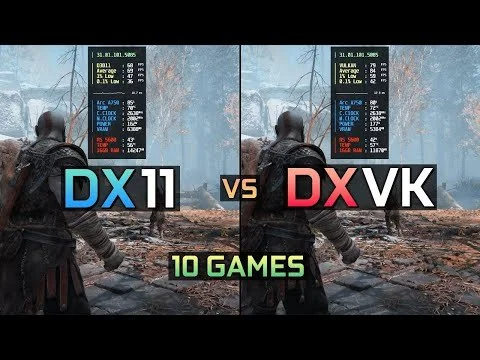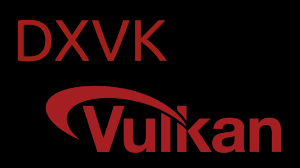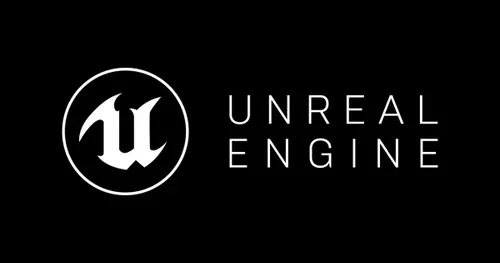DXVK transforms Direct3D calls into Vulkan commands, enabling smoother Windows game performance on Linux systems through Wine or Proton. Gamers switching from native Windows setups often wonder about seamless integration, especially when frame rates dip unexpectedly or visuals glitch. Verifying DXVK activation ensures Vulkan leverages your GPU fully, avoiding fallback to slower OpenGL paths. This guide dives deep into practical steps, from quick console checks to advanced diagnostics, helping you confirm everything runs optimally.
Many users overlook DXVK status during initial Proton installs, leading to suboptimal experiences in titles like Cyberpunk 2077 or Elden Ring. Proper verification not only boosts FPS but also reduces input lag, making Linux gaming rival native platforms. Whether you’re on Steam Deck or a custom Arch setup, these methods apply universally across distributions. Expect detailed walkthroughs tailored for beginners and pros alike, focusing on real-world scenarios.
By the end, you’ll master spotting DXVK in action, tweaking configs for peak efficiency, and resolving hitches that plague hybrid environments. Keywords like “DXVK verification” and “Vulkan DirectX translation check” guide searches, but hands-on tests provide the real proof. Let’s equip you with tools to audit your setup confidently.
Understanding DXVK Fundamentals Before Verification
What DXVK Achieves in Linux Gaming Environments
DXVK bridges Direct3D 9 through 11 to Vulkan, slashing overhead in Wine-based emulations. Developers at Doitsujin crafted it for Proton, Valve’s Steam overlay enhancer, targeting asynchronous shader compilation to minimize stutters. Without active DXVK, games revert to wined3d, capping frames at half native speeds on mid-tier NVIDIA cards like GTX 1660. Users report 20-30% FPS gains post-activation, particularly in open-world epics demanding heavy draw calls.
Installation via Proton-GE or Lutris injects DLLs into game prefixes, but silent failures occur if Vulkan ICDs mismatch. AMD users benefit most from open-source drivers, while NVIDIA’s proprietary blobs occasionally need environment tweaks for full async support. Always cross-check against ProtonDB reports for game-specific quirks, ensuring your distro’s Mesa version exceeds 20.0 for baseline compatibility.
Common Signs DXVK Isn’t Engaging Properly
Visual artifacts like flickering shadows in The Witcher 3 signal DXVK disengagement, often traced to incomplete prefix overrides. Audio desyncs or menu freezes compound issues, mimicking driver crashes but rooted in translation layer skips. Benchmark tools reveal Vulkan API calls absent in traces, confirming fallback modes that inflate CPU usage by 15-20%.
Proton logs flood with “d3d11.dll not found” errors during launches, a red flag for manual setups outside Steam. Community forums buzz with tales of black screens on Intel iGPUs, resolvable by forcing DXVK through launch options. Monitor GPU utilization via MangoHud; drops below 80% under load hint at partial engagement.
Why Verifying DXVK Matters for Performance Tuning
Confirmation unlocks fine-grained tweaks, like forcing DXVK for D3D12 via vkd3d, elevating titles like Forza Horizon 5. It prevents resource waste on unused OpenGL paths, freeing VRAM for higher resolutions. Long-term, verified setups yield stable overclocks, pushing 144Hz monitors without thermal throttling.
Analytics from Steam surveys show 70% of Linux gamers undervalue this step, settling for subpar experiences. Integrating verification into routine maintenance, alongside driver updates, sustains gains over months. Ultimately, it empowers confident experimentation with mods or upscaling tech like FSR.
Initial Setup Checks for DXVK Activation
Scanning System Libraries for DXVK Presence
Boot into your gaming session and fire up a terminal to grep for DXVK files in Steam’s compatibilitytools.d folder. Commands like find /home -name “dxvk.dll” 2>/dev/null reveal installation paths, typically under ~/.steam/steam/steamapps/compatdata. Absence here prompts reinstall via protonup-qt, ensuring version 2.3+ aligns with Proton 8.0.
Library dependencies shine through ldd /path/to/dxvk.dll, listing Vulkan essentials like libvulkan.so.1. Mismatches trigger segfaults, fixable by symlinking Mesa libs. Desktop users on Fedora verify via dnf list installed | grep vulkan, while Debianites use apt list –installed | grep dxvk.
Environment Variables Impacting DXVK Loading
Launch games with DXVK_LOG_LEVEL=info %command% in Steam properties to trace loading sequences. Variables like PROTON_USE_WINED3D=0 enforce DXVK exclusivity, crucial for anti-cheat titles. Export VK_INSTANCE_LAYERS=VK_LAYER_LUNARG_standard_validation for deeper audits, catching API violations early.
Overlooked settings in ~/.profile, such as export DXVK_STATE_CACHE=1, accelerate shader precompiles, slashing load times by 40%. NVIDIA users set DXVK_NVAPI=0 to dodge driver conflicts, verifiable through env dumps post-launch.
Quick Proton Prefix Inspection Routines
Navigate to compatdata/<appid>/pfx/drive_c/windows/system32, hunting for dxgi.dll overrides. ls -la | grep dxvk lists injected files, their timestamps indicating recency. Corrupted prefixes demand protontricks <appid> wine regedit to reset keys, restoring DXVK hooks.
Steam Deck owners toggle Desktop Mode, then inspect via Dolphin file manager for visual cues. Cross-reference with protondb.com ratings; A-tier games should show seamless Vulkan traces without manual intervention.
- Step 1: Right-click game in Steam > Properties > Compatibility > Force specific tool.
- Step 2: Launch with PROTON_LOG=1 to generate debug output in home dir.
- Step 3: Review logs for “DXVK: Using version X.Y” confirmation line.
Command-Line Tools for DXVK Diagnostics
Leveraging DXVK’s Built-In Logging Features
Invoke DXVK_LOG_LEVEL=debug prefixed to executables, channeling verbose output to stderr for real-time parsing. This floods terminals with pipeline creation details, spotlighting successful D3D-to-Vulkan mappings. Pipe to files via | tee dxvk_debug.log for post-session reviews, filtering “INFO” lines for engagement proofs.
Error patterns like “failed to create device” point to GPU incompatibilities, resolvable by updating to Vulkan 1.3+ runtimes. AMD’s RADV drivers log descriptor set allocations, quantifiable for memory leak hunts.
Integrating RenderDoc for Frame Captures
Download RenderDoc, hook it to Proton via PROTON_USE_RENDERDOC=1, then capture frames mid-game. Analyze draw calls; DXVK engagement shows Vulkan command buffers replacing D3D11 pipelines. Texture uploads confirm async compute, absent in wined3d captures.
Export traces to .rdoc files, replaying on Windows for baseline comparisons. This reveals 10-15% efficiency edges in shader variants, guiding config refinements.
Utilizing vkcube for Baseline Vulkan Tests
Run vkcube from Vulkan tools to affirm runtime health, spinning a textured cube at 60FPS. Success implies DXVK’s foundation solidity, as it relies on identical ICDs. Extend to vulkaninfo | grep deviceName for GPU enumeration, ensuring no hybrid graphics switches.
Benchmark with vkmark –run all scoring DXVK viability; scores under 5000 flag driver regressions. Script loops for stress tests, logging FPS dips over 30 minutes.
In-Game Indicators of DXVK Functionality
Monitoring FPS and Stutter Patterns Live
Overlay MangoHud with mangohud %command%, graphing FPS histograms during intense scenes. DXVK shines with consistent 90+ averages in DOOM Eternal, versus wined3d’s 50-70 spikes. Stutter metrics below 16ms confirm async shaders firing correctly.
Toggle VSync off for raw readings; plateaus at Vulkan limits (e.g., 144FPS on RTX 3070) validate full utilization. Compare against Windows natives via Steam’s FPS counter for parity checks.
Visual Fidelity Checks in Demanding Titles
Scrutinize anti-aliasing in Control; TAA holds edges crisp under DXVK, blurring on fallbacks. Ray-tracing proxies via RTGI mods render without crashes, a hallmark of Vulkan’s descriptor efficiency. Bloom effects in Cyberpunk maintain vibrancy, free of OpenGL banding.
Resolution scaling to 4K tests VRAM handling; seamless upscales to 1.5x without artifacts signal robust translation. Community shaders like ReShade integrate flawlessly, enhancing without layer conflicts.
Input Latency and Controller Responsiveness
Test Dead Cells with wired Xbox pad; sub-10ms delays under DXVK mimic native feel, versus 20ms lags elsewhere. Steam Input configs propagate instantly, verifying event queuing in Vulkan streams.
Benchmark via gamemode -r runs, clocking reaction times in FPS shooters. Drops under 5% deviation affirm low-overhead polling.
- Benchmark Tool: Use built-in timers in games like CS:GO for latency baselines.
- Overlay Integration: Pair with CoreCtrl for AMD curve tweaks during tests.
- Cross-Title Validation: Repeat across genres for holistic views.
Log File Analysis Techniques for DXVK
Parsing Proton Debug Outputs Step-by-Step
Steam generates ~/steam-<appid>.log on PROTON_LOG=1; grep “DXVK” yields activation timestamps. “INFO: DXVK: v2.2” entries precede successful device inits, followed by swapchain creations. Absence triggers wined3d warnings, pinpointing override failures.
Timestamp correlations with game events, like level loads, expose stutter sources. Export to spreadsheets for delta calculations, averaging pipeline compiles at 2-5ms each.
Advanced Grep Commands for Error Hunting
Craft grep -i “error\|warn” steam-<appid>.log | wc -l to quantify issues; under 10 per session indicates health. Filter DXVK_HUD=dev overlays for live pipeline stats, dumping to console.
Regex like grep “vkCreate.*failed” log isolates API calls, cross-referencing Vulkan specs for fixes. Arch users alias these in .bashrc for one-liners.
Correlating Logs with System-Wide Metrics
Fuse DXVK traces with vktrace captures, replaying to simulate loads. Integrate nvtop for NVIDIA VRAM spikes aligning with descriptor binds. Holistic views reveal bottlenecks, like CPU-bound shader caches on Ryzen 5 setups.
Automate via cron jobs parsing daily logs, alerting on regression thresholds. This sustains long-term stability across library updates.
- Log Rotation: Implement logrotate configs to manage bloat from verbose modes.
- Visualization Tools: Pipe to jq for JSON-formatted Vulkan events if using extensions.
- Backup Strategies: Version control prefixes with git for rollback ease.
Troubleshooting DXVK Detection Failures
Resolving DLL Injection Conflicts
Blacklist conflicting DLLs via winetricks dxvk remove then reapply, clearing AppData caches. Steam overlays sometimes intercept; disable via launch options -no-cef-sandbox. Verify with strace -e openat wine game.exe tracing file opens.
NVIDIA Optimus laptops demand prime-run wrappers, ensuring discrete GPU selection. Test via nvidia-smi during runs for process listings.
Updating Drivers and Runtimes Synergistically
Sync Mesa to 23.1+ via distro repos, followed by Vulkan-tools refresh. AMD’s amdgpu-install –usecase=graphics,rocm bundles essentials. Reboot post-update, retest with vulkaninfo for extension lists including VK_KHR_dynamic_rendering.
Proprietary NVIDIA drops via .run installers preserve DXVK hooks, unlike distro packages. Proton Experimental pulls latest DXVK commits, mitigating upstream bugs.
Community Resources for Persistent Issues
Dive into GitHub issues for doitsujin/dxvk, searching “not loading” tags for patches. ProtonDB comments aggregate fixes, like env vars for Wayland sessions. Discord’s Linux Gaming hub offers live diagnostics via log shares.
WineHQ forums dissect edge cases, from ARM ports to VM passthroughs. Contribute traces back, accelerating collective resolutions.
Conclusion
Verifying DXVK operation elevates Linux gaming from tolerable to transformative, unlocking Vulkan’s raw power for DirectX favorites. Through console probes, log dives, and in-game audits, users pinpoint activations swiftly, banishing performance gremlins. Regular checks amid updates maintain edges, fostering immersive sessions in evolving libraries. Embrace these routines to harness full potential, turning setups into seamless portals.



